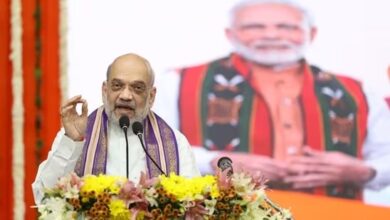Farmers’ demonstrations are evidence of a broken market economy
Across the globe, farmers in Europe and India are rising up in rebellion. Since January 2023, farmers have protested in at least 65 nations. The inability of the unrestricted market economy to support farming is the unifying theme of the historically large wave of protests, despite their disparate origins.

The language used by protesting farmers to express their unhappiness may vary from one nation or area to another, but the fundamental point remains the same: global markets have failed to sustain agricultural revenues. European farmers are requesting the correct price for their goods, whereas Indian farmers want to purchase at the minimum support price (MSP) as a legal entitlement. In addition to the collapse of the potato price in Kenya and the low prices of vegetables in Nepal, the demonstrations have drawn attention to the growing cost of production, lower imports, and declining output prices in various European nations, including Germany, France, and Belgium.
Malaysian farmers demonstrated their low paddy prices as their Spanish counterparts spilled 400,000 gallons of milk on the streets. During a recent meeting with President Macron, Confederation Paysanne, a well-known association of small farmers in France, requested a guarantee that no acquisitions would be permitted below a fixed agricultural price that comprised production costs plus farmer compensation and social protection.
The liberalization of trade has also faced opposition. Farmers have protested against cheap imports from Ukraine in Germany, France, Romania, Italy, and Poland, in addition to calling for a revision of free trade agreements. In several locations, they have damaged imported food items, halted trucks transporting agricultural goods from abroad, and obstructed roadways. Thousands of farmers and fishermen have demonstrated against cheap fish imports in French ports, claiming that they are ruining agricultural livelihoods. Farmers in India have renewed their calls for the country to leave the World Trade Organization.
In the last year, farmer protests have shook 24 nations in Europe, 12 in Africa, 11 in Asia, 8 in South America, 8 in North and Central America, and 2 in Oceania, according to a compilation by Down to Earth magazine. According to a research conducted in January-February 2024 by the independent pan-European media network Euractiv, there is a considerable desire in Europe, particularly from France, Germany, Spain, and Italy, for a fair and remunerative price for farmers. Farmers in Belgium also want safety in the food chain. In addition, they were upset by the stringent environmental laws that the European Commission is attempting to implement in an effort to reach net-zero emissions.
EU farmers are concerned about how trade would affect the agriculture industry. German farmers demonstrated against low prices by demanding incentives, against environmental laws, particularly the Nitrate Directive, and against the elimination of fuel tax exemptions for agricultural vehicles, which Berlin had promised to phase out. In essence, apart from local concerns, the majority of these demonstrations across continents were mostly against low crop prices, high production costs, cheaper imports, and the removal of incentives.
The agricultural industry has not benefited from putting markets in charge of agriculture. This is shown by the farmers’ worldwide outrage. In any event, the prevailing economic theory that has purposefully maintained low food prices to prevent inflationary spirals has victimized Indian agriculture. It’s time for the Reserve Bank of India to review its macroeconomic policies and update them to reflect the current reality, since this is an antiquated approach. According to the family expenditure survey for 2022–2023, food spending has drastically decreased even while housing, health care, and education costs are growing for every family and are not sufficiently represented in the consumption basket.
Strong resistance appears the minute you highlight the need for a much-needed course adjustment that will essentially release agricultural prices from stringent macroeconomic supervision. We are cautioned that it will result in increased inflation and market distortions. Farmers who repeatedly stress the necessity for a fixed price are subject to criticism. However, the same economic reasoning was noticeably silent when a corporate scam caused inflation to soar by 57% during the epidemic years and to continue at 53% for most of 2023. Economist Isabella M. Weber of the University of Massachusetts first identified “seller’s profit” as the cause of market distortions brought about by outright greed. The US President addressed this in his most recent State of the Union address and pledged to take corrective measures.
Returning to the argument for a minimum farm price, it is important to remember that, despite decades of attempts to stabilize farm prices via various incentives and domestic support systems, agricultural misery has actually become worse on a worldwide scale. A documentary called Deja vu, filmed by former NASA scientist Bedabrata Pain, demonstrates how the free market concept drove small farmers out of agriculture, leaving a trail of suffering and destruction on the field. This is also true in the US, where market reforms in agriculture have been adopted.
Thus, a free market is not the answer. In actuality, it is the cause of the ongoing agrarian problem. There is no reason why farming would be a losing venture, if only markets were wise enough to reward efficiency. Global farmer revolts provide evidence of how badly the economy has worked. It’s time to completely rewrite the economic blueprint that has purposefully kept farmers in abject poverty.
For growers worldwide as well as for farmers in India, a legalized MSP is the way of the future. The markets will react appropriately.







